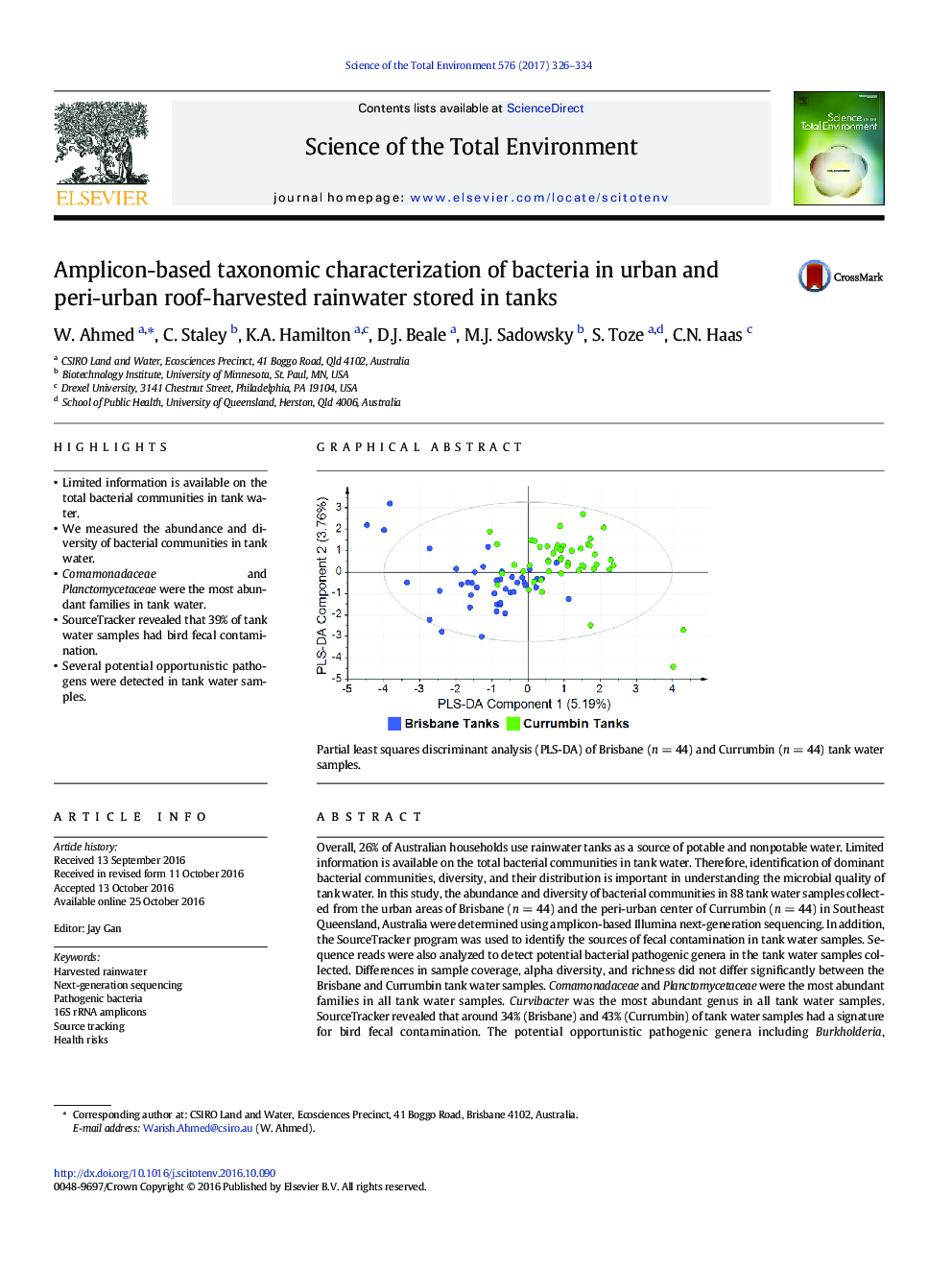| کد مقاله | کد نشریه | سال انتشار | مقاله انگلیسی | نسخه تمام متن |
|---|---|---|---|---|
| 5751976 | 1619715 | 2017 | 9 صفحه PDF | دانلود رایگان |
- Limited information is available on the total bacterial communities in tank water.
- We measured the abundance and diversity of bacterial communities in tank water.
- Comamonadaceae and Planctomycetaceae were the most abundant families in tank water.
- SourceTracker revealed that 39% of tank water samples had bird fecal contamination.
- Several potential opportunistic pathogens were detected in tank water samples.
Overall, 26% of Australian households use rainwater tanks as a source of potable and nonpotable water. Limited information is available on the total bacterial communities in tank water. Therefore, identification of dominant bacterial communities, diversity, and their distribution is important in understanding the microbial quality of tank water. In this study, the abundance and diversity of bacterial communities in 88 tank water samples collected from the urban areas of Brisbane (n = 44) and the peri-urban center of Currumbin (n = 44) in Southeast Queensland, Australia were determined using amplicon-based Illumina next-generation sequencing. In addition, the SourceTracker program was used to identify the sources of fecal contamination in tank water samples. Sequence reads were also analyzed to detect potential bacterial pathogenic genera in the tank water samples collected. Differences in sample coverage, alpha diversity, and richness did not differ significantly between the Brisbane and Currumbin tank water samples. Comamonadaceae and Planctomycetaceae were the most abundant families in all tank water samples. Curvibacter was the most abundant genus in all tank water samples. SourceTracker revealed that around 34% (Brisbane) and 43% (Currumbin) of tank water samples had a signature for bird fecal contamination. The potential opportunistic pathogenic genera including Burkholderia, Chromobacterium, Clostridium, Legionella, Mycobacterium, Nocardia, and Pseudomonas were most prevalent in tank water samples. Next-generation sequencing can be used as an initial screening tool to identify a wide array of potential pathogenic genera in tank water samples followed by quantifying specific pathogen(s) of interest using more sensitive molecular assays such as quantitative PCR (qPCR).
Partial least squares discriminant analysis (PLS-DA) of Brisbane (n = 44) and Currumbin (n = 44) tank water samples.100
Journal: Science of The Total Environment - Volume 576, 15 January 2017, Pages 326-334
